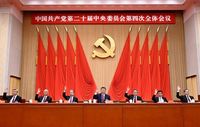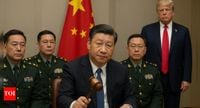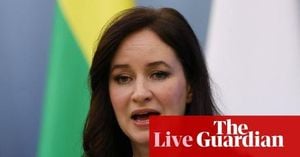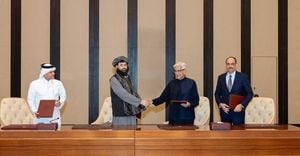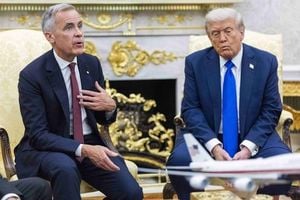Chinese President Xi Jinping has left an indelible mark on the country’s latest five-year plan, steering China into what state media and party officials describe as a period of both “strategic opportunity” and daunting challenges. The plan, which will guide China’s development from 2026 to 2030, was unveiled following the Communist Party’s closely watched fourth plenum in Beijing—a gathering that also saw the most sweeping reshuffle of top officials in nearly a decade and a renewed push for technological self-reliance.
According to reporting by Xinhua and People’s Daily, Xi “personally headed” the drafting team for the 15th five-year plan, overseeing every stage from fact-finding tours across the nation to multiple rounds of revisions with the Politburo Standing Committee. The framework, as described by an anonymous drafter cited in the state press, was shaped by Xi’s visits to regions as diverse as Shanghai, Guizhou, Tibet, and Xinjiang. His direct involvement, the reports emphasize, was decisive: “[He] oversaw and guided the formulation of the proposal for the 15th five-year plan, poured a great deal of heart and blood into it, playing a decisive role.”
The plan’s unveiling comes at a pivotal moment. As the South China Morning Post and The Times of India highlight, Xi warned that China faces “rising uncertainties and unforeseen factors,” with the international environment growing more volatile and domestic challenges mounting. Trade tensions with the United States—now led again by Donald Trump—have intensified, with tariffs and technology restrictions testing China’s export resilience. Meanwhile, domestic economic headwinds, from a sluggish property sector to weak household spending and an aging population, threaten to undermine the country’s growth ambitions.
“We must have the courage to face major tests amid high winds, rough waves and even raging storms, and tackle difficulties, risks and challenges with a spirit of historical initiative—focusing on doing our own work well to write a new chapter in sustaining China’s economic growth and long-term social stability,” the Party’s communique declared, as reported by AOL and The Herald Review.
The four-day plenum, attended by 168 full and 147 alternate Central Committee members, was not only about economic planning. It also delivered the largest shake-up in the Communist Party’s upper ranks since 2017. Veteran general Zhang Shengmin was promoted to the second-highest role in the Central Military Commission, replacing He Weidong, a former vice-chairman and close confidante of Xi, who was expelled along with eight other top generals on corruption charges. This anti-corruption purge, a hallmark of Xi’s leadership since 2012, has now touched more than six million officials, reinforcing both party discipline and Xi’s personal authority. As AOL reported, these ousted officials were accused of “extremely serious crimes involving exceptionally large sums of money,” with their cases referred to military prosecutors.
Analysts note that while Xi’s anti-corruption campaign is broadly popular with the Chinese public, it also serves to enforce loyalty within the party and military—a point underscored by the sheer scale of recent purges. “An unprecedented proportion of central committee members are in political trouble,” Neil Thomas of the Asia Society Policy Institute told the Associated Press, highlighting the ongoing centralization of power under Xi.
On the policy front, the new five-year plan is ambitious. As The Guardian and The Herald Review report, China is doubling down on scientific and technological self-reliance. The plan calls for massive investment in artificial intelligence, quantum technology, advanced manufacturing, and even nuclear fusion—areas seen as vital for the country’s future competitiveness. Science and Technology Minister Yin Henjun noted that breakthroughs in AI and computing power are expected to remain central to China’s growth, while also calling for tighter regulation and stronger ethical standards.
For the first time, the space sector has been named a “top priority,” with pledges of “huge development” in fields ranging from new energy to aerospace. Zheng Shanjie, head of the National Development and Reform Commission, projected 10 trillion yuan in new market opportunities across these high-tech industries. “These industries are ready to take off,” Zheng said, adding, “It means that in the next 10 years we will build another high-tech industry in China and this will inject continued impetus to our efforts to achieve Chinese modernization.”
Yet, the challenges are formidable. China’s property market remains in crisis, eroding household wealth and dampening consumer confidence. Youth unemployment is nearing 20 percent, and social safety nets remain thin. “Both cyclical and structural factors are behind the weak private consumption,” analysts from ANZ Research told AFP, with income inequality and limited welfare coverage cited as persistent hurdles.
The plan also addresses demographic issues, reiterating Beijing’s goal of building a “birth-friendly society.” This includes promises to improve childcare, education, and elderly care, as well as a gradual increase in the retirement age. The Party’s communique stressed the need to expand domestic demand, modernize factories, and encourage consumer spending—moves seen as essential to sustaining growth as export markets become less reliable.
Externally, China’s leaders are keenly aware of the risks posed by great-power competition. The communique, while avoiding direct mention of the U.S.-China trade war, warned of “profound and complex” changes in the international balance of power. Senior party official Han Wenxiu expressed confidence in China’s ability to turn crisis into opportunity, predicting that the country’s “strength and international status would grow in the next five years.”
Despite mounting trade tensions, China aims to remain a global manufacturing powerhouse, accounting for roughly 30 percent of global production. The plan calls for keeping manufacturing at an “appropriate level” with advanced industries as the backbone, even as overcapacity and price wars persist in sectors like electric vehicles and solar panels. Companies such as BYD and CATL have already become global leaders in EV battery technology, and China’s control over rare earths continues to give it leverage in global supply chains.
Looking ahead, Xi’s vision is clear: technological self-reliance, economic resilience, and a more assertive role on the world stage. The Party has set its sights on achieving “markedly stronger” international influence by 2035 and safeguarding the multilateral trading system, portraying Beijing as a defender of free trade amid growing global uncertainty.
As Xi prepares to meet President Trump at the APEC summit in South Korea—where rare earth exports and semiconductor restrictions are expected to top the agenda—China’s leaders are bracing for “high winds, rough waves, and even dangerous storms.” The stakes, both at home and abroad, have rarely been higher.
For now, Xi’s stamp on China’s future is unmistakable, his authority reaffirmed, and his ambitions for the world’s second-largest economy undiminished—even as the road ahead promises turbulence as well as opportunity.
